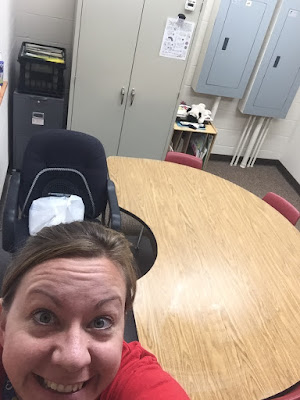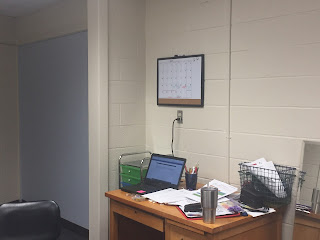Happy Friday! 
I'm glad you're back for this week's installment of The Reading Strategies Book (affiliate link) summer book study. We are taking a closer look at Goals 11 and 12 this week. I can't believe we will wrap this up next week!
If you've missed the previous posts, check them out here:
Oh, vocabulary! Serravallo says, "...research actually suggests that most word learning occurs unconsciously and through normal reading, writing, speaking and listening." She goes on to suggest that teachers can best support vocabulary goals by allowing children to read a lot, encouraging students to notice new words, teaching strategies for figuring out the meaning of words, and encouraging them to use those words when they write and speak.
I especially appreciated the emphasis on encouraging students to use new words. I think it is so important in developing new vocabulary that will "stick."
11.2 Say It Out Loud
This is a strategy that is so simple, but it is so important. As teachers, we should encourage students to try to say unfamiliar words out loud. Often times, when they attempt the word, they realize it is a word that have already heard or said.
11.22 Reading Up a Ladder
I love the visual on this one, so I wanted to share it with you. It probably explains it better (and more simply) than I can anyway. :-)
 |
| P.S. One of my absolute favorite parts of this book is the visuals! |
11.23 Be Alert for Word Choice
This strategy has three simple steps: Find or figure out the word. Think about the context. Ask yourself, "What's the feeling, mood, or connotation of the word, based on how it's used?"
The visual adds to this by suggesting that readers are to look closely for strong words and consider why the author chose that specific word.
This goal was something I hadn't really considered as part of my reading instruction, but now I can see just how important it can be. It focuses on Supporting Students' Conversations through strategies that support speaking, listening, and deepening comprehension.
Serravallo gives a HUGE list of conversational skills that students need to practice (page 325-326). Many of the skills are things I have tried to teach my 1st and 2nd graders over the years, and I'm very excited about doing this more intentionally and purposefully.
12.2 Listen and Respond
Yes! We have had many of these conversations in the primary classroom. It is so difficult for them to listen well and respond with thoughts that are connected! This one had another great graphic:
12.8 Super STARter Jots
This one definitely caught my eye because of the question, "What jots are conversation worthy?" It challenges students to consider what makes a great conversation. My favorite tip...something original, unique! I don't know how many times my second graders had their hand up to share, only to have them repeat what someone else said OR say, "What so-and-so said." I think this strategy would lessen those moments. I hope.
12.10 Sentence Starter Sticks
A little teacher prep work...make some conversation sticks Have students use a sentence starter stick and make sure they connect their thought with what the person before them said.
Here's a few ideas that are given:
In addition...
On the other hand...
I agree with you because...
I disagree because...
I'd like to add on to what ___________ said...
This might not be right, but maybe...
Why do you think...?
What do you think about...?
---------------------
I want to hear from you! Tell me about your favorites either in the comments below or on our Facebook page.
Don't forget to check out the other blog posts below for more thoughts and ideas!



























